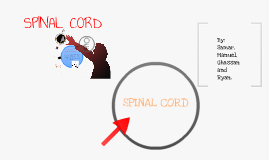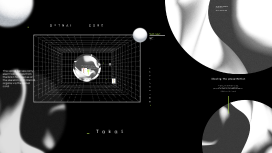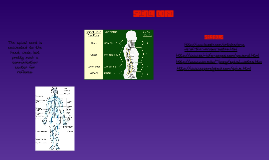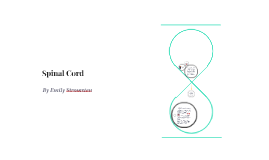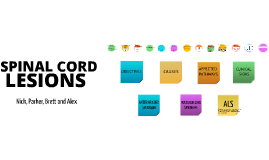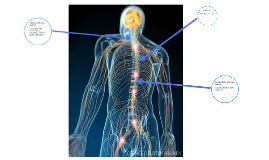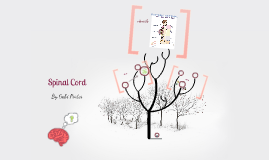Spinal Cord
Transcript: Differential Differential Diagnosis Differential Diagnosis Exam Visual fields intact to confrontation PERLA; EOMI with no nystagmus Facial sensation intact bilaterally Face is symmetric Gag reflex intact Trapezius and SCM strength 5/5 bilaterally Tongue is midline Strength is 5/5 in bilateral upper extremities 3/5 in bilateral lower extremities Reflexes are 2+ bilateral biceps, triceps, and brachioradialis 1+ bilateral patellars with mute toes bilaterally Sensation is decreased to all modalities in the bilateral lower extremities Exam Alert and oriented. Speech and Language are normal. Visual fields intact to confrontation PERLA; EOMI with no nystagmus Facial sensation intact bilaterally Face is symmetric Gag reflex intact Trapezius and SCM strength 5/5 bilaterally Tongue is midline Strength is 5/5 in bilateral upper and lower extremities Reflexes are 2+ bilateral biceps, triceps, brachioradialis, and patellar with 1+ ankle jerks; mute toes bilaterally; no ankle clonus Sensation is intact to light touch in bilateral upper extremities; Decreased to light touch in both feet. Decreased to vibration in all 4 extremities with deficit gradient from distal to proximal Exam Language intact CN II: Intact to confrontation Left pupil 3 mm and reactive; right pupil 6 mm and non-reactive Sensation is intact in face Face is symmetric Uvula is midline Tongue is midline LUE : 4/5 deltoid; 4/5 arm flex/ext; 3/5 grip strength RUE: 5/5 throughout LLE : 4/5 hip flexion; 4/5 knee ext/flex; 4/5 PF/DF RLE: 5/5 throughout Reflexes are 2+ in the RUE; 3+ LUE; 2+ RLE; 3+ LLE Sensation intact in bilateral upper extremities Decreased to vibration and proprioception in both feet Structural - Thoracic or Lumbar Stenosis Infective - Epidural Abscess; Tuberculosis (Potts disease (or tuberculous spondylitis); Poliomyelitis(viral) (no sensory involvement); Viral Myelitis (VZV; HSV; CMV; EBV); HTLV-1 associated myelopathy Inflammatory - Transverse Myelitis; Guillain-Barre; Sarcoidosis; connective tissue disorders such as SLE, Sjogren, Behcet's can give you a segmental myelitis similar to transverse myelitis; Post vaccinial (rabies, MMR, dTP); radiation myelopathy Demyelinating - MS, NMO, ADEM Traumatic - EDH; SDH; SAH Vascular - infarction; hemorrhage; aneurysm; AVM; carotid dissection; sickle cell crisis Neoplastic - Primary brain tumor; Metastatic brain tumor Inflammatory - Vasculitis; sarcoidosis Autoimmune /demyelinating - MS; ADEM Infectious- brain abscess ; viral or bacterial encephalitis Metabolic - hypoglycemia; hyper and hyponatremia Epileptic - Post-ictal / Todd's paralysis Psychiatric/ malingering - Hoover sign Exam Language intact Right gaze preference PERLA; Right Gaze Preference Decreased sensation on left side of face Left lower facial droop Uvula is midline Tongue is midline LUE : 3/5 deltoid; 4/5 arm flex/ext; 3/5 grip strength RUE: 5/5 throughout LLE : 4+/5 hip flexion; 4+/5 knee ext/flex; 4+/5 PF/DF RLE: 5/5 throughout Reflexes are 2+ in the RUE; 1+ LUE; 2+ RLE; 1+ LLE Sensation is decreased to all modalities in the LUE and LLE Intact on the RUE and RLE Differential A. Ischemic 1. Artery to Artery a. Dissection b. Aortic thrombosis 2. Cardioembolic a. Cardiac thrombus b. Endocarditis 3. Right to Left Shunts a. Air; Cholesterol 4. Thrombosis a. Small Vessel (Lacunar strokes) 5. Hypoperfusion a. MI, Shock, Hypotension with ICA stenosis B. Prothrombotic 1. Drug induced (estrogen) 2, Pregnancy related (central venous thrombosis 3. Hereditary : Sickle Cell; Antiphospholipid antibodyl protein C/S deficiency C. Inflammatory 1. Arteritis (primary) - Primary angitis of CNS Behcet's, Sjogrens syndrome 2. Arteritis (secondary) - Large arterities (Takayasu; granulomatous giant cell arteritis Medium arterities - Polyarteritis nodosa; Kawasaki disease Small to Medium - Wegener's granulomatosis; Churg-strauss syndrome Small arteries - Henoch-Schonlein purpura; lupus erythematsus Hereditary Non-metabolic - Charcot Marie Tooth axonal and demylenating Metabolic - Axonal Porphyria, Uremia. Hypothyroidism, Bariatric surgery, Hepatic failure Metabolic - Demylenating - Metachromatic leukodystrophy (adult), Late-onset Krabbe's disease Ischemic - Axonal - Diabetic focal neuropathies or plexopathy , Vasculutic Acute Autoimmune - Axonal GBS , Vasculutis ; Demylenating - GBS Chronic Autoimmune - Axonal - Lupus erythematosus, Sjögren's syndrome, Sarcoidosis, Vasculitis Cryoglobinemia, Celiac disease, Primary biliary cirrhosis Nutritional Def - Axonal - B12, Vit E, Folate, Thiamine, Copper Toxic Environmental Axonal - Acrylamide, Arsenic, Carbon disulfide, Ethylene oxide, Lead, Organophosphates, Thallium Medication Axonal- Dapsone (motor predominant), Nucleoside analogs (ddI, ddC, d4T), Disulfiram Colchicine (with myopathy), Isoniazid (INH), Metronidazole, Nitrofurantoin, Cisplatin, Thalidomide Vincristine Demylenating - Amiodarone(mixed), Taxol (mixed) Neoplastic/paraneoplasic - (extradural tumors : Mets from lung, breast, prostate) Intradural






